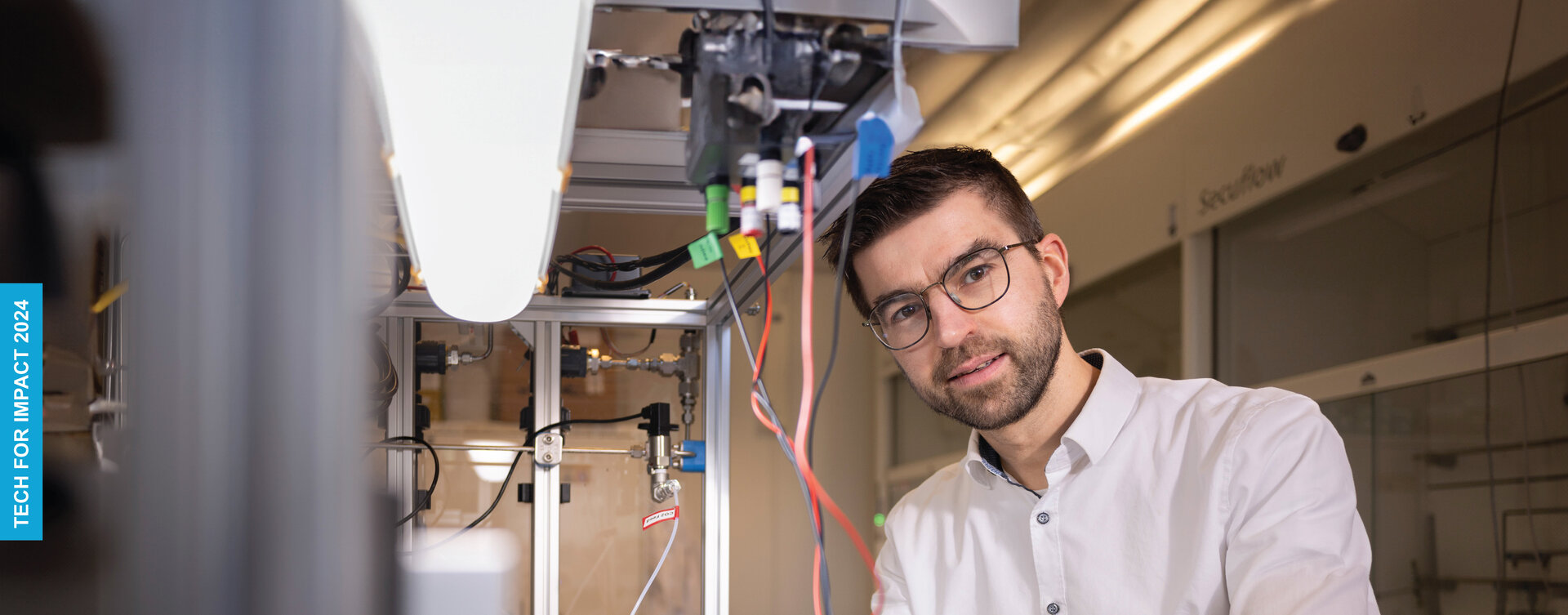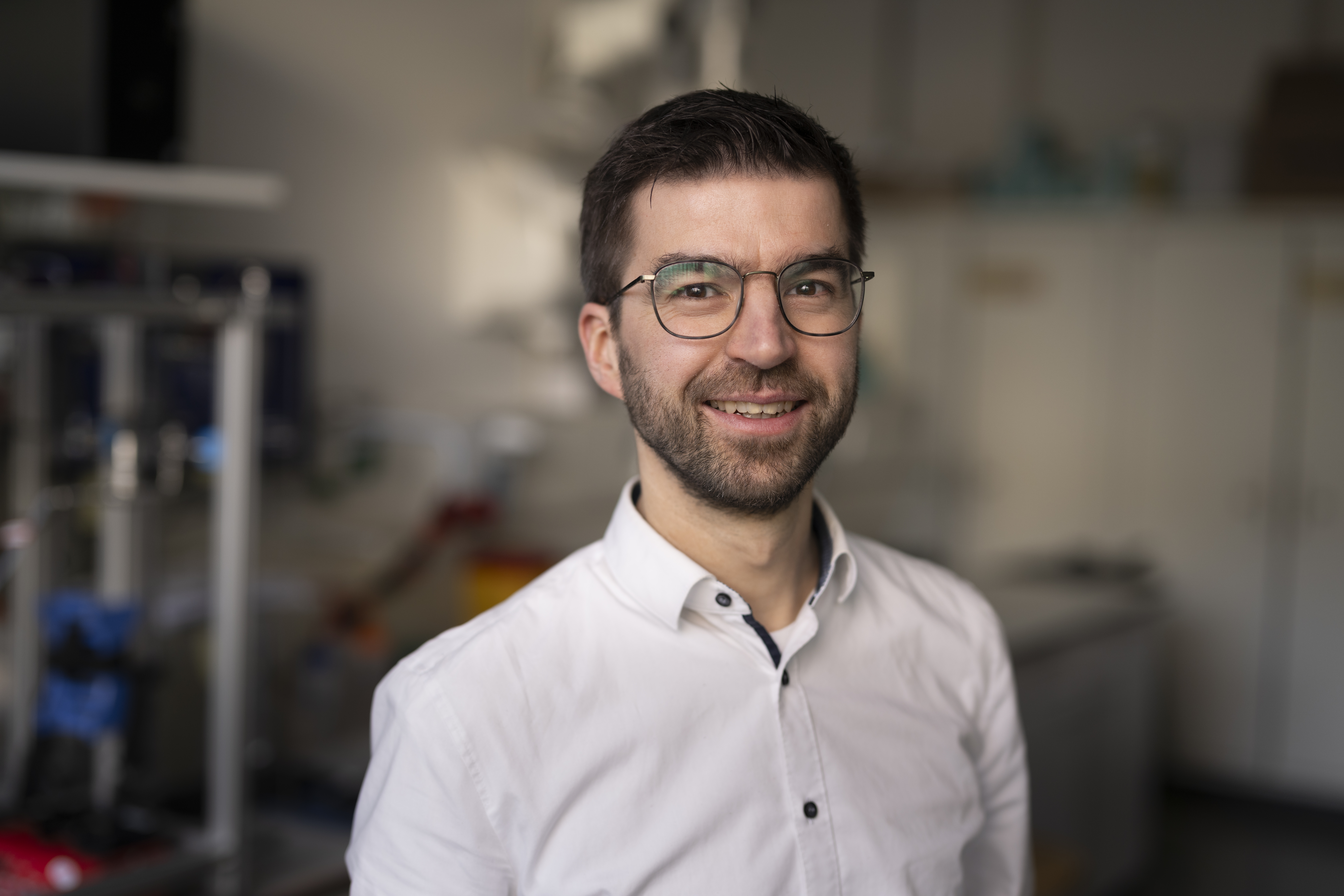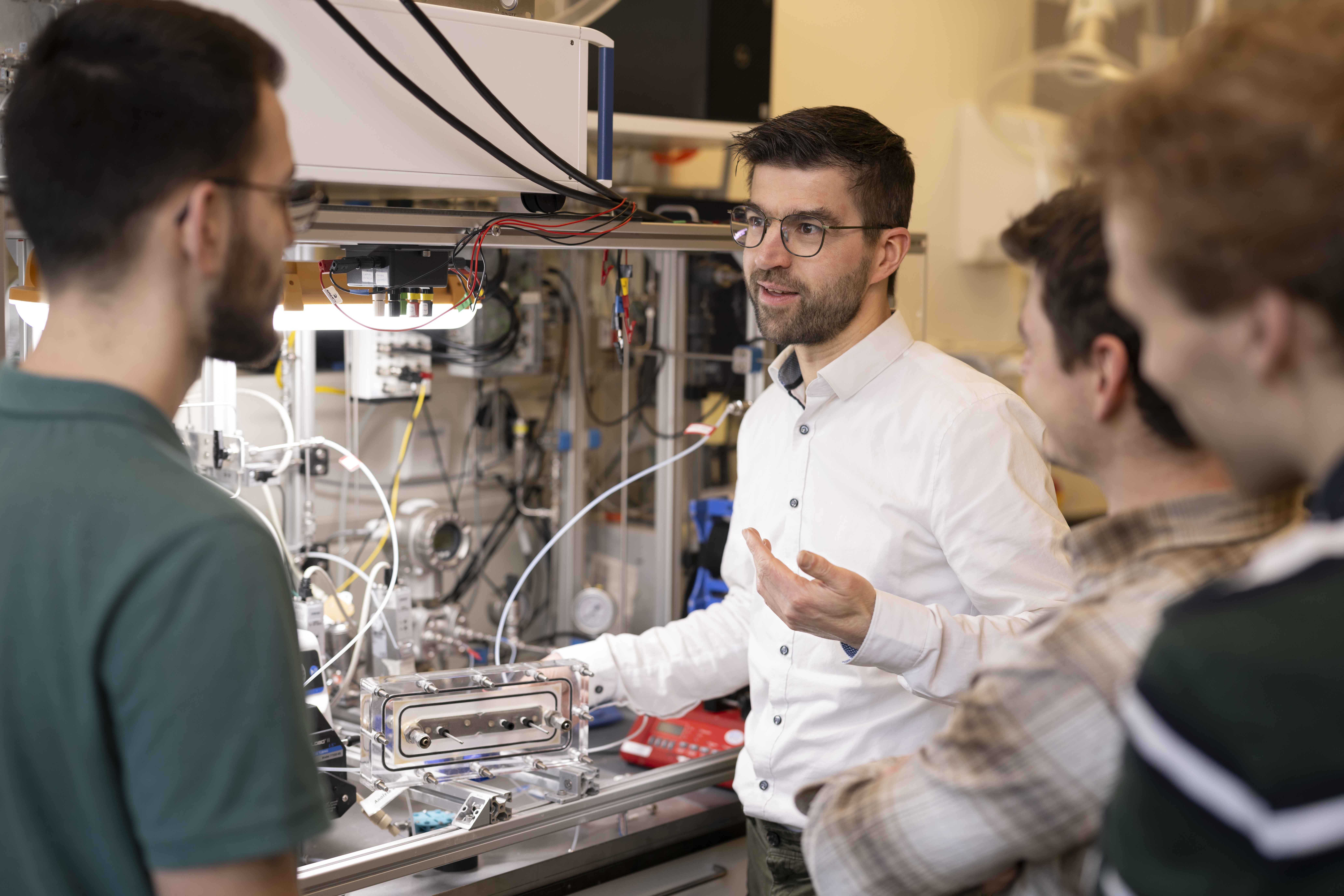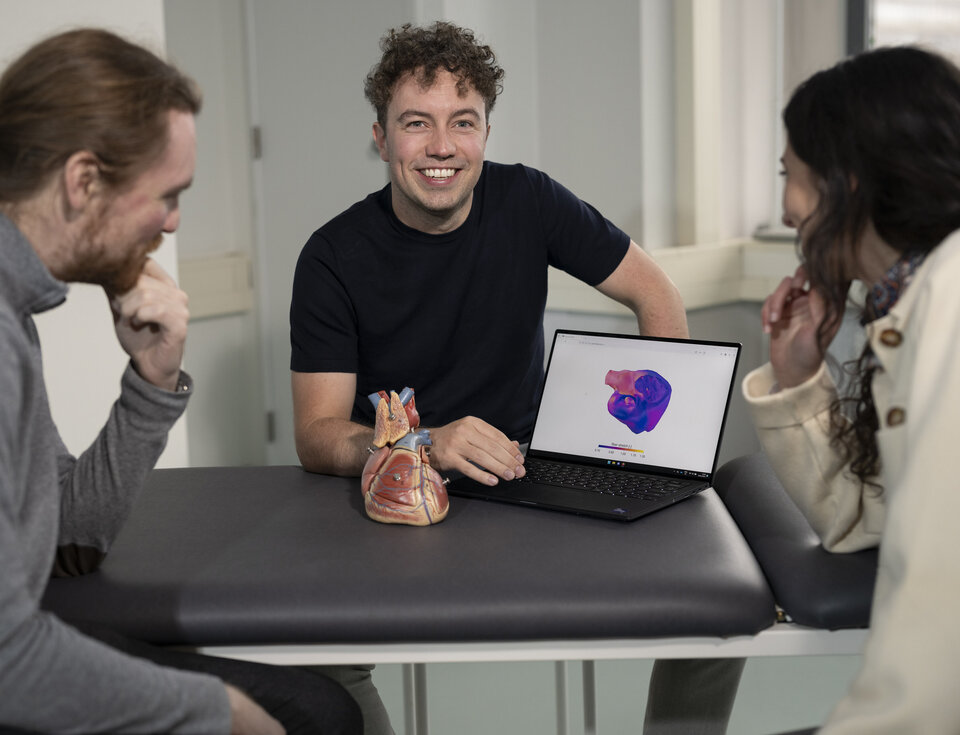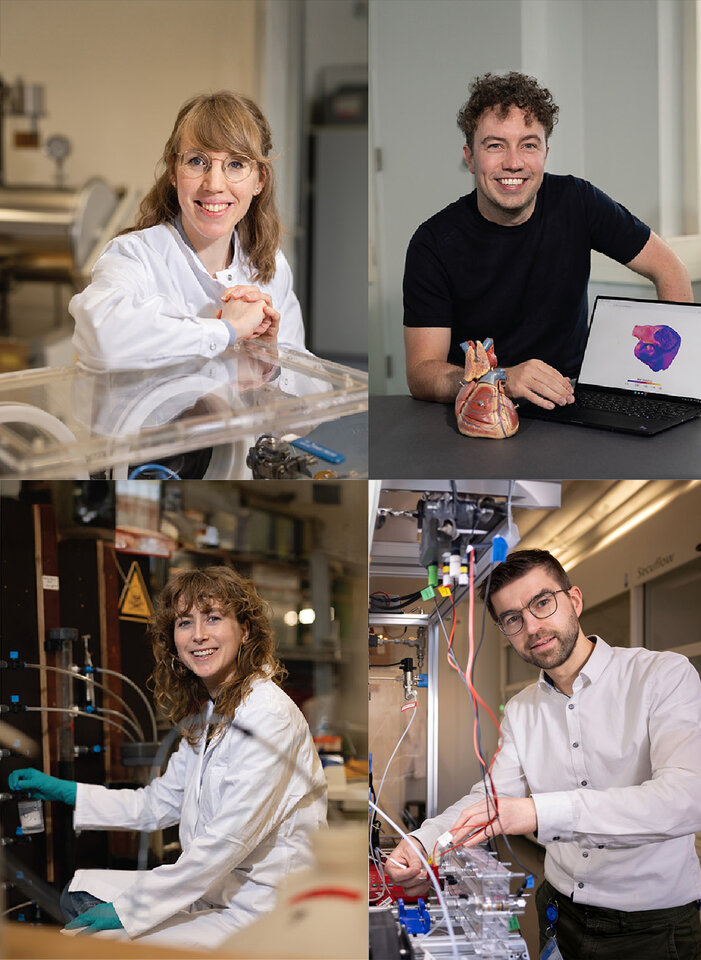The European Union is striving to be climate neutral by 2050. To achieve this, the emission of greenhouse gas has to be reduced. However, zero emissions are not achievable in some sectors such as construction and agriculture. Dr David Vermaas is trying to find a solution for this and is working at TU Delft on a technology that removes CO2 from the atmosphere. It is a race against the clock. “We should have had this technology years ago. We now have to catch up.”
Vermaas’ research group is working on capturing CO2 from the atmosphere through electrochemistry and sustainable electricity. This is a negative emission process and is thus vital in achieving the goal of being climate neutral.
“We use water and a bipolar membrane to capture CO2 from the air,” explains David Vermaas. “If you apply electricity, it turns the water acidic and base without the need for chemicals. We can then capture CO2 from the atmosphere. After that we change the acidity of the water from a base solution to an acidic one. You then get a supersaturated liquid, some sort of sparkling water. We capture the CO2 that emerges and reuse the solution again and again to capture more CO2 from the air.”
CO2 storage
The captured CO2 can be stored in rocks or underground, for example. “Underground storage is a good option as you remove CO2 from the air and store it for centuries. This helps solve the greenhouse gas problem. But there is a lot of debate about what type of CO2 you store. Capturing CO2 from factories or energy plants has been an option for years, but it does not deal with the root of the problem. This is why we are concentrating on capturing CO2 from the air which we can use to make negative emissions.”
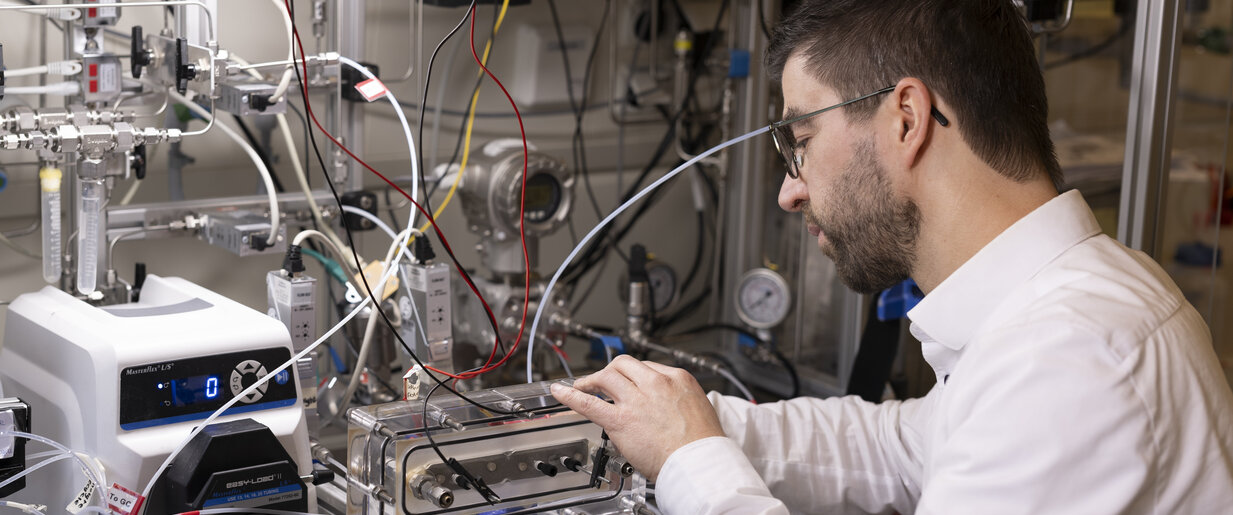
"We are working on an important part of the energy transition for which there is little technology available. We should have had this technology years ago. We now have to catch up."
Dr.ir. David Vermaas, associate professor TU Delft
Sustainable fuel and plastic
The captured CO2 can also be used in the long term to make alternative ‘fossil fuels’. The sustainable fuels can be used in processes that are hard to electrify, such as long distance flights and in the agricultural and construction sectors. It can also be used to manufacture products such as sustainable plastic. “At the moment, more than 10% of our oil consumption is used to make plastics and chemicals. Some of the plastic is recyclable, but there will always be a need for new plastic. If you capture CO2 from the air, you can use it to make ethylene, which in turn is the raw material for polyethylene, one of the most frequently used plastics.”
Improving the set-up
Vermaas’ lab has a functioning CO2 capture set-up with a capacity of 1 kg per day. “This set-up shows that this is possible. We now need to improve the most important parts. The first will be the membrane which we use to make acidic and base solutions. This can be made much more energy efficient and have a higher production capacity. The second is to work on bringing the liquids and air together. There is not much CO2 in the air, only 0.04%. This means that you need a lot of air to make any volume of liquid. We are working on new and more efficient designs for the liquid-air contactor.”
Catching up
The European Union strives to be climate neutral by 2050. To become climate neutral, it needs to remove CO2 from the atmosphere. This would reduce residual emissions to zero. “We are working on an important part of the energy transition for which there is little technology available. We should have had this technology years ago. We now have to catch up.”
Donations from alumni
“We plan to do two things with the donations from alumni. The first is build a mobile demonstration model. This will show how our system works and help us get more understanding and support for our work. Things are now often being done for the energy transition because of the need, but it would be great if they were also done because we are good at doing them, both as a university and a country. The additional funds would also enable us to support the two researchers working on this with additional capacity in testing. This would strengthen and speed up the research.”
-
Delft University Fund uses your data to process and record your donation and to inform you about the activities and work of the University Fund. Your personal details will be treated confidentially in accordance with the Dutch Personal Data Protection Act and will never be provided to third parties. Please read our privacy statement here.
Researcher profile
Name: David Vermaas (40)
Born in: Hoogeveen
Expertise: chemical engineer
Faculty: Applied Sciences
Working on: capturing CO2 from the atmosphere
Impact: use of negative CO2 emissions to help make the EU climate neutral
Donation spent on: extra support for researchers and building a demonstration model
Why TU Delft
“Only a few companies and universities are working on capturing CO2 from the atmosphere. TU Delft has been doing this for five years and has a large energy technology community. This is a strong foundation for working on this. Capturing CO2 from the atmosphere is an important part of the energy transition for which there is little technology available. TU Delft and the Netherlands can grab this opportunity to lead the way internationally in CO2 technology.”
